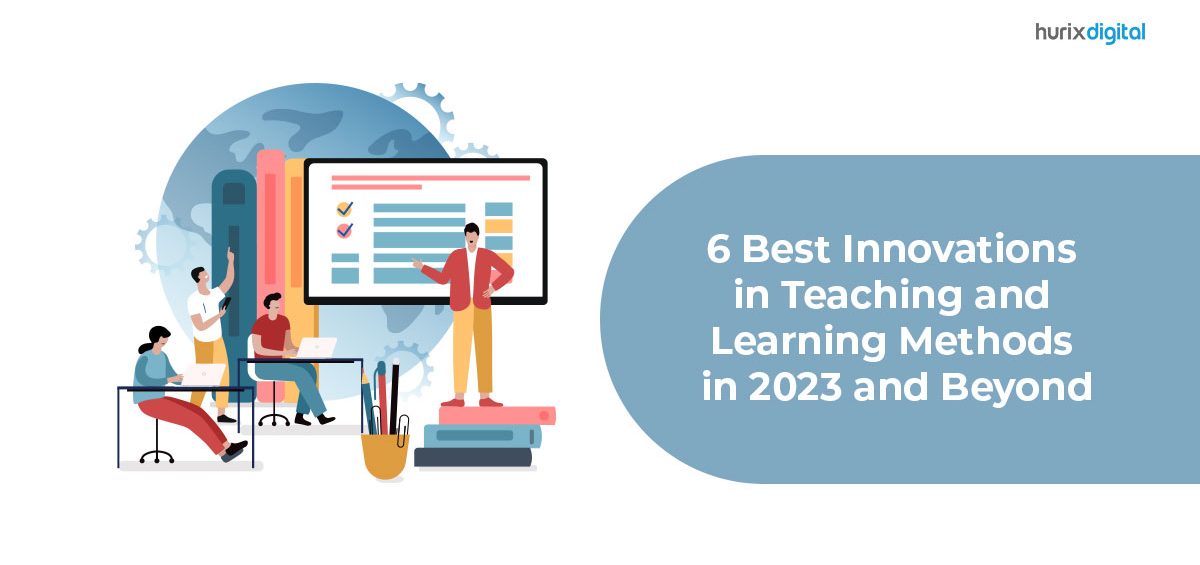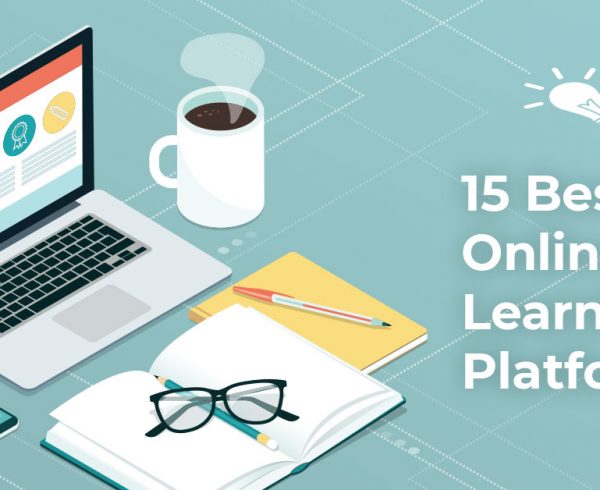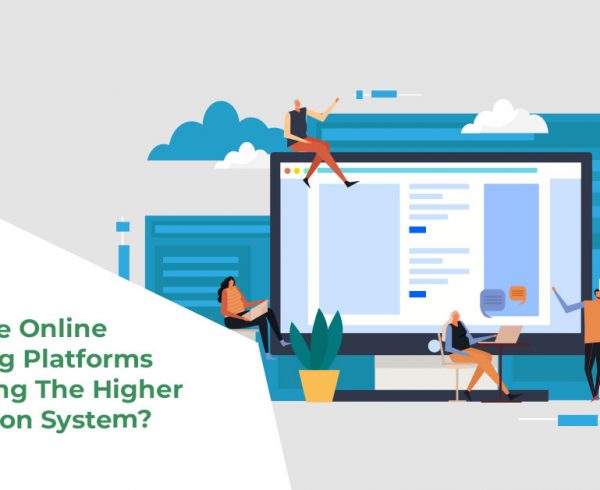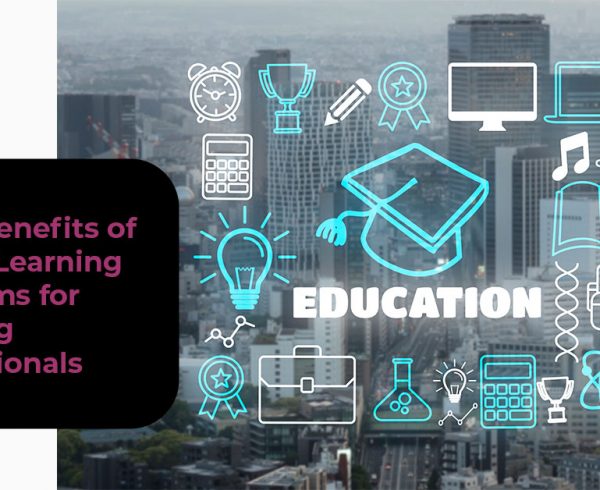Summary
This article provides a snapshot of the innovations in teaching and learning methods delivered by online learning platforms for higher education.
The digitalization of education has led to numerous innovations in how we teach and learn. Education providers are creating and delivering content in a way that mirrors how individuals are organically choosing to learn.
Learners have always had diverse needs but were forced to learn through a one-size-fits-all approach. But today, eLearning has changed the game.
Learners are also opting to learn in different ways – consuming eBooks, attending online live instructor sessions, watching on-demand videos, or listening to audio representations.
The global e-learning market was estimated to be worth $197.00 billion in 2020. In 2030, it is projected to reach a market size of $840.11 billion, growing at a compound annual growth rate (CAGR) of 17.5%.
Let’s take a look at how innovative online learning platforms for higher education are leveraging innovations in eLearning to remove barriers and make learning more effective for millions of learners.
Table of Contents:
- Learning Through Interactivity
- The Shift from Physical to Etextbooks
- Learning Skills Via Live Simulations
- Focus on Accessible Education
- Higher Measurability of Learning Effectiveness
- Leverage a Single, Unified Platform
6 Innovations In Teaching And Learning Methods
Here is a snapshot of how the smart use of technology is revolutionizing the way we teach and learn:
1. Learning Through Interactivity
The adoption of eLearning is unlocking a whole new way of learning. Education providers can build interactivity into educational resources. The introduction of quizzes, problem-solving games, notes, and related links can encourage active learning experiences.
For instance, traditionally, the only way a student could learn Newton’s Laws of Motion was by attending a physical classroom where the teacher explained the concepts.
Today, the student can watch animated videos which demonstrate the laws in action. They can do an online assignment to demonstrate what they learned and then take a quiz after the lesson to test their knowledge.
Hence, learning has become a much more engaging, visual, and addictive experience. Teachers become facilitators who nudge learners to the right resources, address more complex queries, and track student progress.
2. The Shift from Physical to eTextbooks
One of the most popular modern teaching approaches is the introduction of ePUB format eBooks, which enable many useful functionalities missing from paper books and PDF eBooks.
For instance, learners can make notes, interact with teachers and fellow learners through features such as highlights, and engage with multimedia elements such as videos, audio presentations, and infographics.
Hyperlinks to content located outside the scope of the eTextbook further connect the dots and expose students to related historic and real-time events and additional resources that enhance their understanding of a subject.
3. Learning Skills Via Live Simulations
While it’s important for learners to build knowledge, it is just as important to build skills to be competitive in today’s work world.
One of the innovative ways in which education providers are in this is true immersive learning. Educators design a live simulated environment where learners engage in real-time to solve problems.
For instance, learners can strengthen coding skills in a live environment. Group simulations are also possible, enabling learners to build team skills, which is an in-demand skill in the workplace.
4. Focus on Accessible Education
One of the biggest value-adds through eLearning is the ability to build accessible education for a wide spectrum of learners with diverse needs. Teachers, on their own, cannot provide accessible education to learners with diverse needs.
This is where cutting-edge digital publishing platforms enable course creators to design the same content in a way that makes it easy for special needs, mobility challenges, and geographical and language barriers to access with ease.
Simply put, learning is accessible to every learner in a way that is most relevant to them.
Here’s an example. If a learner has a hearing challenge, they can learn by watching videos with subtitles, consuming infographics, reading eBooks, and attending live instructor-led video conferences with caption capabilities, online.
However, in a physical classroom, they would need the help of a sign language interpreter to keep pace, as all sessions are instructor-led.
Also Read: Making Math Books Accessible: Tips and Tricks for InDesign Designers
5. Higher Measurability of Learning Effectiveness
Data-driven learning is an important value-add of eLearning, especially when delivered with the right technology. Today, educators can review extensive data, which offers insights into learner habits, behavior, challenges, and limitations.
They can also customize dashboards and receive diverse data sets for a holistic understanding of learner effectiveness. They can determine whether or not resources are working and enhance curriculum and learning methodologies accordingly.
6. Leverage a Single, Unified Platform
One of the top contemporary educational technology trends is the introduction of a single, unified platform that enables all stakeholders – learners, teachers, and guest lecturers – to engage via one interface.
This approach helps educators streamline the entire teaching and learning process by enabling learners to access on-demand learning resources, attend live instructor-led sessions, collaborate and submit assignments, and track progress from one location.
On the other hand, education providers can share resources, host activities, and measure learning progress, from the same platform.
Also Read: 4 E-Learning Trends for the Future of the Higher Education System in 2023
The Future of Education
eLearning is no doubt the future of education. However, it is important to design courses and content in such a way that is effective and not overwhelming for learners.
At times, education providers can overtly focus on bringing elements like gamification, multimedia content, virtual reality simulations, and other interactive pillars to content while losing sight of learning effectiveness.
This is where measuring learning effectiveness and taking data-driven content development and distribution decisions are key to the success of contemporary eLearning.
Conclusion
Smart usage of technology can help education providers and online learning platforms for higher education upgrade their teaching and learning methodologies. One of the best approaches is to partner with a seasoned digital technology specialist to set up the infrastructure and tools to transform learning outcomes.
Access to such a framework creates more bandwidth for educators who can play a deeper role in learning facilitation, innovative pedagogy, and tracking learner progress.
Are you a K12 education provider from schools, universities, and online course platforms? If you are looking to raise learning effectiveness through the smart use of technology, then partner with Hurix Digital. We offer customized services designed to elevate online learning platforms for higher education.
Connect to start a conversation.









